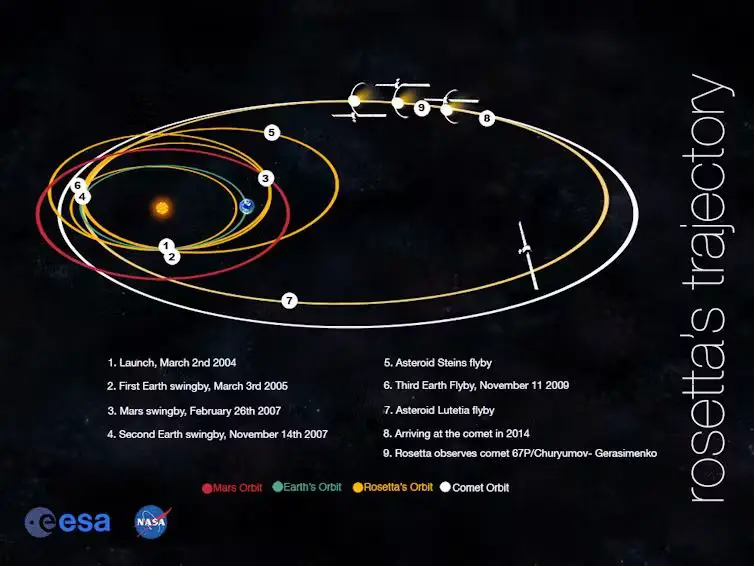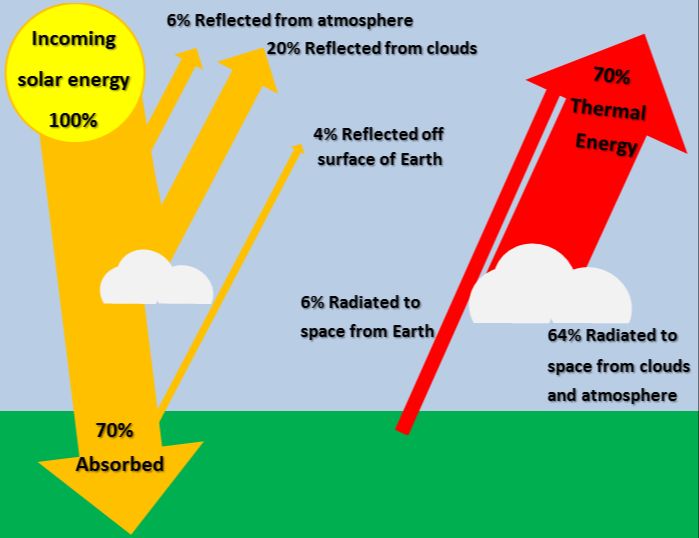Can Earth Be Propelled Out Of Solar System?
Introducing the Question

The premise of propelling Earth out of the solar system involves using advanced technology to accelerate our planet to escape velocity, allowing it to break free of the Sun’s gravitational pull and travel into interstellar space. This fantastical idea explores whether human civilization could ever gain enough power and control over nature to dramatically alter the cosmic status quo.
There are a few theoretical reasons why propelling Earth could be desirable. First, as the Sun continues to brighten over billions of years, moving planets farther out could extend their habitable lifetimes. This could allow humanity to avoid a far-future climate catastrophe. Second, exploring interstellar space by sending Earth itself could provide invaluable knowledge about the galaxy beyond our star system. Finally, the thought experiment appeals to those who think humanity should take control of its cosmic destiny rather than passively accept our orbit around an aging star.
However, attempting to propel our entire planet also implies enormous risks. Achieving the necessary thrust and technology would likely require harnessing energies far beyond our current capabilities, with potentially unforeseen consequences. Ethically, such planetary engineering could be seen as an affront to nature or an excess of human hubris. Environmentally, changing Earth’s orbit may disrupt the stability of the entire solar system. While theoretically interesting, most experts consider propelling Earth unwise and likely impossible.
Earth’s Orbital Velocity
The Earth has an average orbital velocity around the Sun of 29.78 km/s (107,200 km/h; 66,620 mph), which allows it to cover the Earth’s diameter in about 7 minutes and complete its orbit around the Sun in one year (Source: Earth’s orbit). This orbital velocity keeps the Earth following its elliptical orbit around the Sun due to gravity.
To escape the Sun’s gravitational pull entirely, the Earth would need an additional velocity of at least 16.7 km/s, known as the solar system escape velocity at Earth’s position. This would give the Earth enough kinetic energy to break free of the Sun’s gravity and enter interstellar space. However, providing this enormous burst of thrust and acceleration evenly across the entire planet presents immense engineering difficulties. Current chemical rocket propulsion methods are not capable of generating anywhere close to the power needed. Novel propulsion methods would need to be developed to even attempt propelling the Earth out of the solar system.
Propulsion Methods
There are a few hypothetical methods that could potentially propel Earth out of the solar system. However, the feasibility of actually utilizing these methods is highly questionable.
One proposal is attaching enormous chemical rockets or ion engines to push the planet (1). Chemical rockets would need to burn massive amounts of fuel continuously to generate enough thrust. Ion engines could provide a steadier, prolonged push using electricity, but would require truly gigantic solar panel arrays. The practical challenges of building engines powerful enough to move Earth make this idea seemingly impossible with current or near-future technology.
Using antimatter for propulsion has also been suggested (1). Antimatter reacts with normal matter to release tremendous amounts of energy. But antimatter is difficult to produce and store. Current methods only generate tiny amounts in particle accelerators. The infrastructure needed to make enough for Earth propulsion does not exist.
Finally, there are concepts like Shkadov thrusters which would use gigantic mirrors to reflect sunlight. But constructing mirrors or solar sails large and strong enough is similarly impractical (2).
In summary, while ideas exist for propelling something as massive as Earth, the extreme difficulty and costs make them highly unfeasible prospects for the foreseeable future.
(2) https://en.wikipedia.org/wiki/Moving_Earth
Effects on Earth
Propelling Earth out of the solar system would have drastic effects on the planet itself. Earth’s stable orbit is a delicate balance of gravitational forces and momentum. Any attempt to alter its course or velocity could disturb this equilibrium and cause Earth to enter an unstable elliptical or hyperbolic orbit, or even escape orbit entirely and drift into space.[https://www.livescience.com/could-earth-leave-solar-system] This could lead to wild fluctuations in Earth’s climate and seasons as its distance from the Sun changes.
The sudden acceleration needed to propel Earth would also likely trigger massive earthquakes, volcanic eruptions, and tsunamis on the surface as the planet is knocked out of its steady rotational axis. Entire continents could shift and coastlines could be redrawn.[https://theconversation.com/wandering-earth-rocket-scientist-explains-how-we-could-move-our-planet-116365] The g-forces alone would have devastating effects on buildings, infrastructure, and likely human life.
If Earth managed to maintain a stable orbit, the new trajectory around the Sun would still change the length of years, intensity of seasons, and climate patterns. Plant and animal life would struggle to adapt, potentially leading to mass extinctions. Overall, any attempt to move Earth would almost certainly result in catastrophic damage to the planet’s geology, climate, and ecosystems.
Effects on the Solar System
If Earth somehow broke free of the Sun’s gravity and escaped the solar system, it would have major effects on the other planets and the Sun. According to livescience, the loss of Earth’s mass would destabilize the orbits of the other planets. Mars, Jupiter, and Neptune would likely drift outwards away from the Sun. Meanwhile, Venus and Mercury would move closer in. Removing Earth’s mass from the solar system would cause the gravitational balance to shift.
The Sun itself would also be impacted by Earth escaping. As cited by Quora, the Sun would immediately react by contracting slightly from the loss of mass in its orbit. Over a longer period, the absence of Earth would lower the fusion rate within the Sun. This could potentially extend the Sun’s lifespan and affect its evolution into a red giant in billions of years. So while the effects would not be instantaneous, the Sun’s structure and lifespan would ultimately change.
In summary, allowing Earth to escape the solar system would destabilize the orbital dynamics of the other planets and alter the Sun itself. The delicate gravitational balance that has governed the solar system for billions of years would be disrupted by the loss of Earth’s mass and orbital momentum.
Costs
Propelling the Earth out of the solar system would require an unfathomable amount of energy. According to some estimates, shifting the planet from its orbit around the sun and accelerating it to escape velocity would take approximately 2 x 1032 Joules of energy [1]. That’s equivalent to the total energy output of the sun over several billion years. Even with highly advanced technology, harnessing and directing that level of power is well beyond humanity’s current capabilities.
Building a system to propel Earth would likely cost many times the planet’s total economic output. Considering Earth’s GDP is around $80 trillion, the price tag for such a megastructure could hypothetically reach quadrillions of dollars [2]. That unfathomable cost brings into question the value of any potential benefits. Even if somehow technically feasible, the enormous expenditure required likely far outweighs any advantages of repositioning the planet.
Scientific Feasibility
Credible scientists and researchers have proposed some hypothetical methods for propelling Earth out of the solar system, but the overall scientific consensus is that this would not be feasible with current technology. The most well-known proposal comes from the scientific advisor for the sci-fi film The Wandering Earth, who suggested using Jupiter’s gravity to slingshot Earth out of the solar system. As described in an interview with Inverse, this Jupiter assist method could theoretically work, but would require propelling Earth to extremely high speeds not currently achievable.
Others like rocket scientist Ron Turner have suggested attaching gigantic ion thrusters to Earth to provide enough consistent thrust over long periods to push us out of orbit. But as outlined by The Conversation, this method would likely fail due to the incredible energy required. The scientific consensus based on our current technology is that there is no feasible way to generate enough consistent force to propel the massive Earth out of the solar system.
While imaginative hypotheses have been put forward, most experts agree the energy required far exceeds what humanity can currently achieve. With major advances in propulsion and energy technology, perhaps someday we could conceive of moving Earth. But as of now, credible scientists view this as firmly in the realm of science fiction rather than science fact.
Alternatives
While propelling the entire planet Earth out of the solar system presents immense challenges, there are more feasible alternatives that could achieve similar goals. For example, establishing self-sustaining human colonies on other planets or moons would allow humanity to spread beyond Earth without needing to move it.
Mars is a leading candidate for establishing a permanent human settlement due to its similarities to Earth. With the right technologies, Mars could be terraformed over time to become more Earth-like by warming the planet and thickening the atmosphere to support liquid water on the surface. This would allow people to live on Mars without heavy life support systems. Significant progress has already been made in developing technologies for rocket propulsion, life support systems, food production, and other requirements to enable extended human habitation on Mars.
Other proposals include building giant space habitats orbiting the Earth or Sun which could support large human populations. These space colonies could provide Earth-like artificial gravity and environments. For example, the O’Neill cylinder concept describes enormous rotating cylinders up to several miles long that would provide living space equal to thousands of Earths. While enormously challenging to construct, such megastructures could allow humanity to spread throughout the solar system without needing to move planets.
The moons of outer planets like Jupiter or Saturn are also potential sites for space colonization. Their lower gravity compared to Earth would make constructing large habitats and domed surface cities more feasible. While lack of atmospheres would require pressurized habitats, the abundance of water ice on some moons could be utilized for sustaining human life.
Overall, while propelling Earth itself out of the solar system is likely impossible with any existing technology, many alternatives exist for expanding human civilization beyond our home planet on a large scale.
Ethical Considerations
Hypothetically propelling Earth out of the solar system raises complex ethical questions. Some argue we have an ethical responsibility to preserve Earth in its natural state within the solar system (Source). Drastically altering Earth’s trajectory could irreversibly damage ecosystems and human civilization. However, others contend we must consider Earth’s long-term survival, as the Sun will eventually make Earth uninhabitable if it remains in place (Source).
There are differing views on who should decide whether to propel Earth. Some believe the decision should be made democratically by all humanity, as altering Earth’s orbit impacts everyone (Source). However, the tremendous risks and complex science involved suggest experts in fields like astronomy and engineering should guide decision-making. There are also calls for a new “constitution” to ethically govern humanity’s relationship with space and other worlds (Source).
The risks of propelling Earth must be carefully weighed. We may damage ecosystems and make Earth uninhabitable in new ways. However, inaction also carries risks if we allow Earth to become unlivable billions of years from now. There are strong ethical arguments on all sides of this complex issue.
Conclusions
Based on the analysis, propelling Earth out of the solar system does not seem scientifically feasible or ethically advisable given current technology and knowledge. The energy required far exceeds current capabilities, and the effects on Earth’s climate and geology would likely be catastrophic. While hypothetically possible millions of years in the future, there appears little rationale or desire to attempt this. The solar system provides an ideal habitat for humanity, and efforts would be better spent preserving Earth’s environment and expanding civilization’s reach within the solar system in a sustainable manner, rather than embarking on such a risky endeavor. In conclusion, while theoretically possible, propelling Earth from its orbit to exit the solar system remains firmly in the realm of science fiction rather than science fact for the foreseeable future.







